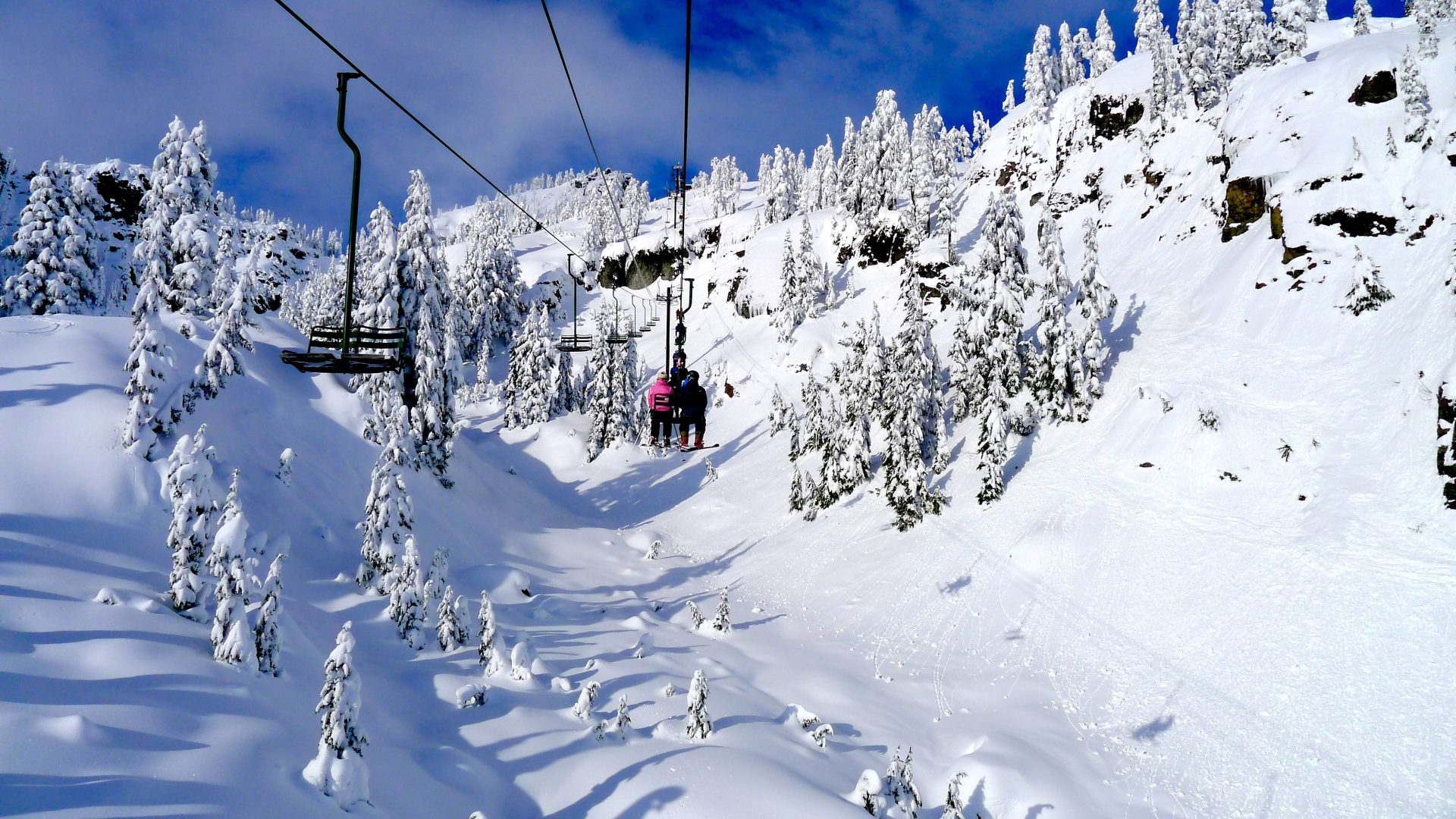
Finding the steepest chairlifts in the United States might seem like a straightforward subject to calculate. In actuality, it is much more subjective than one might expect. Some chairlifts have extremely steep sections going over gorges and ravines, making it easy to think that they could be a top contender. However, more mellow and extended flat areas, which may go unnoticed, can easily balance this list out, regardless of their extreme features. To calculate the seven most gravity-defying lifts in the U.S., we took the simple formula of length of lift divided by the vertical rise from top to bottom to compute the gradient. We used gradientcaulculator.com, as well as skiresorts.info and resort-specific websites, to gather information for creating our list. This leaves us with a list of lifts that will take any skier or rider on the absolute shortest way from top to bottom, regardless of the challenges these lifts may rise above.
To give some perspective, when one thinks of extreme chairlifts, Palasade’s Tahoe’s KT-22 immediately comes to mind. With a length of 5,043 feet and a vertical gain of 1,755 feet, KT-22 boasts a gradient of 19.2°. The higher the degree, the steeper the lift ends up being. Only traditional chairlifts are considered contenders to maintain rankings fairness across the board. Trams, gondolas, and surface lifts will be left to face off in a future list. Every lift on this list has some impressive vertical gain, but our top contenders will have you ready to take a trip out west to see these marvels of ski innovation.
7. Honeycomb Return – Solitude, Utah
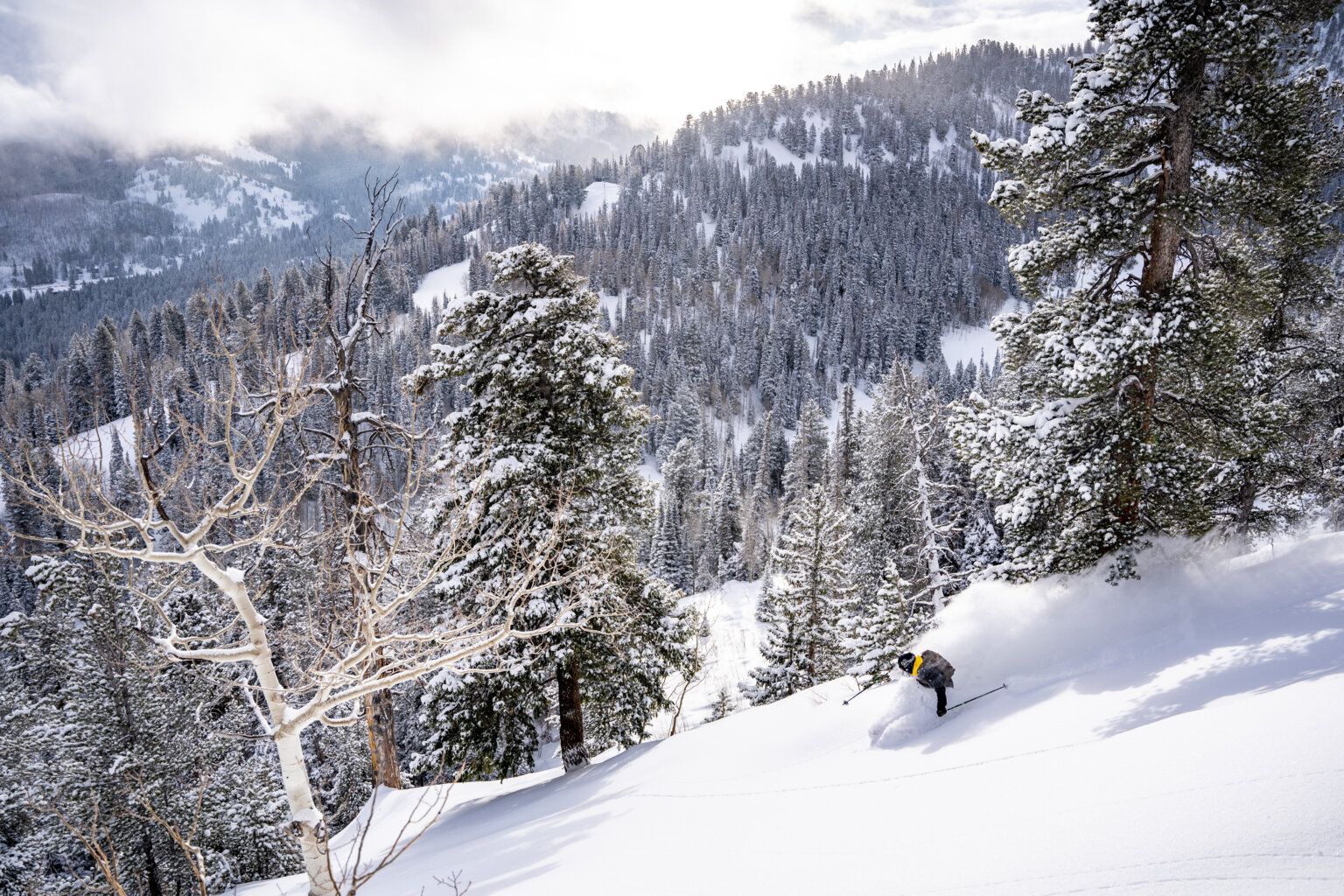
The Honeycomb Return climbs over some truly rugged terrain in Utah’s Wasatch Range. Located in the world-renowned Big Cottonwood Canyon, Solitude Resort is not for the faint of heart. The Doppelmayr CTEC Quad traverses 1,300 feet, gaining a whopping 655 feet of vertical in that short span, leaving it with a gradient of 26.7°. After exiting the lift, skiers and riders will be rewarded with some of Utah’s lightest, fluffiest powder blanketing the slopes from top to bottom.
6. Kachina Peak Lift – Taos, New Mexico
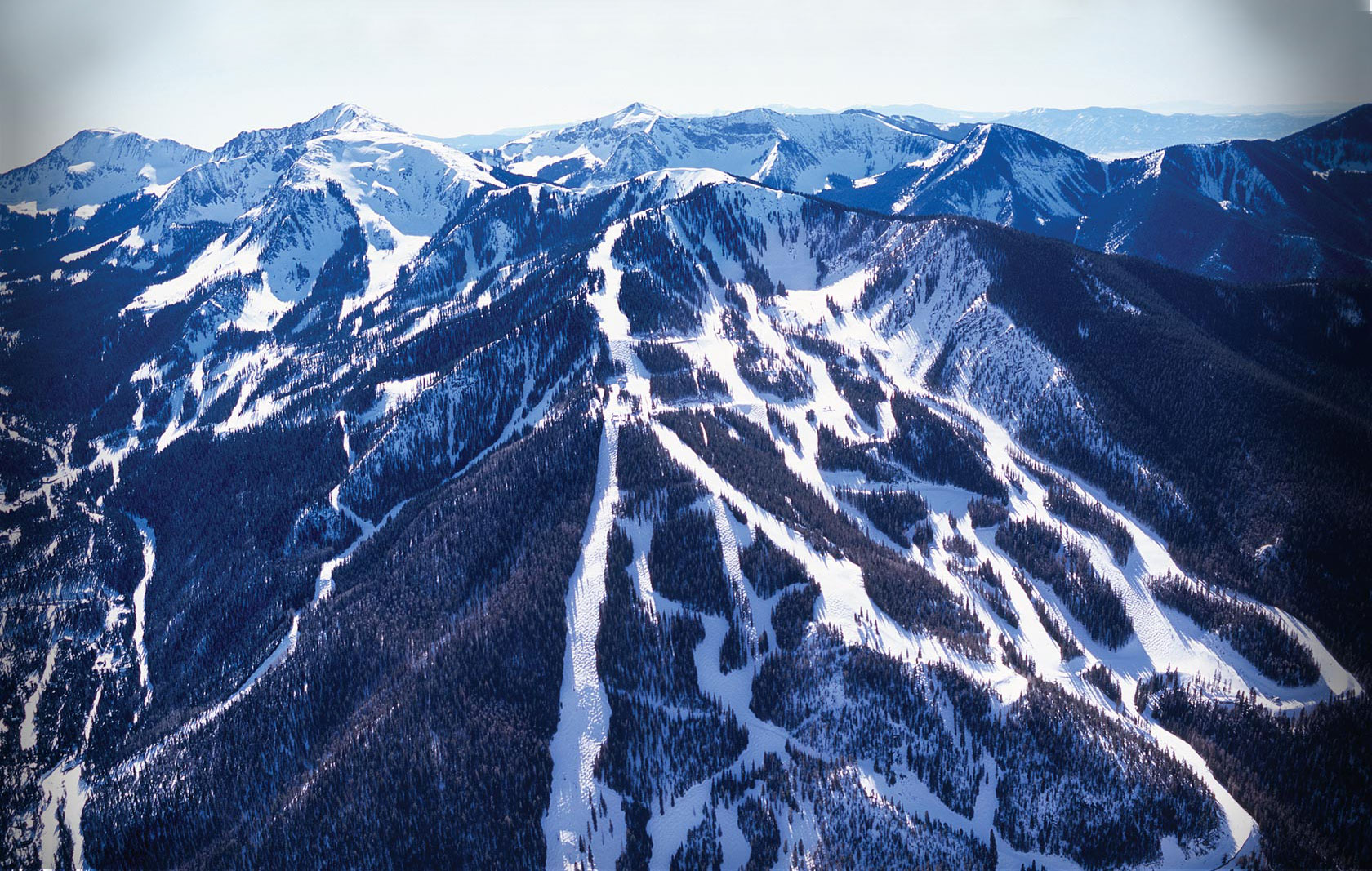
The Southwestern state of New Mexico may be famous for chilies and Breaking Bad; however, it is no slouch when it comes to extreme lifts and fantastic skiing. Taos is well known for its dry, light desert powder and stunning views. This Skytrack Monarch lift brings skiers and riders up a breathtaking 2,119 feet before they know it, gaining 1,076 feet in this short expanse. Kachina used to be open only to backpackers before 2015, but experts are now lucky to be able to lap this behemoth of a mountain with the luxury of a lift. Known for massive powder dumps and steep grades, this spicy Southwest Mountain will leave you planning your next trip back to Taos. Kachina finishes out with a 26.9° gradient.
5. Schlasmans – Bridger Bowl, Montana

Pronounced “Slushmans,” Bridger Bowl is generally known for anything but slush at this high-altitude mecca for the extreme skier or rider. Avalanche beacons are required off this lift; runs are not marked, leaving guests with an authentic feel of the backcountry, all while still being within the helpful eye of ski patrol. This monster lift has a length of 3,211 feet, but climbs a whopping 1,643 feet in that expanse. This leaves Schlasmans with a gradient of 27.1°. Just be prepared, on Schlasmans, the ride up is just the beginning at this Montana destination.
4. Deep Temerity – Aspen Highlands, Colorado
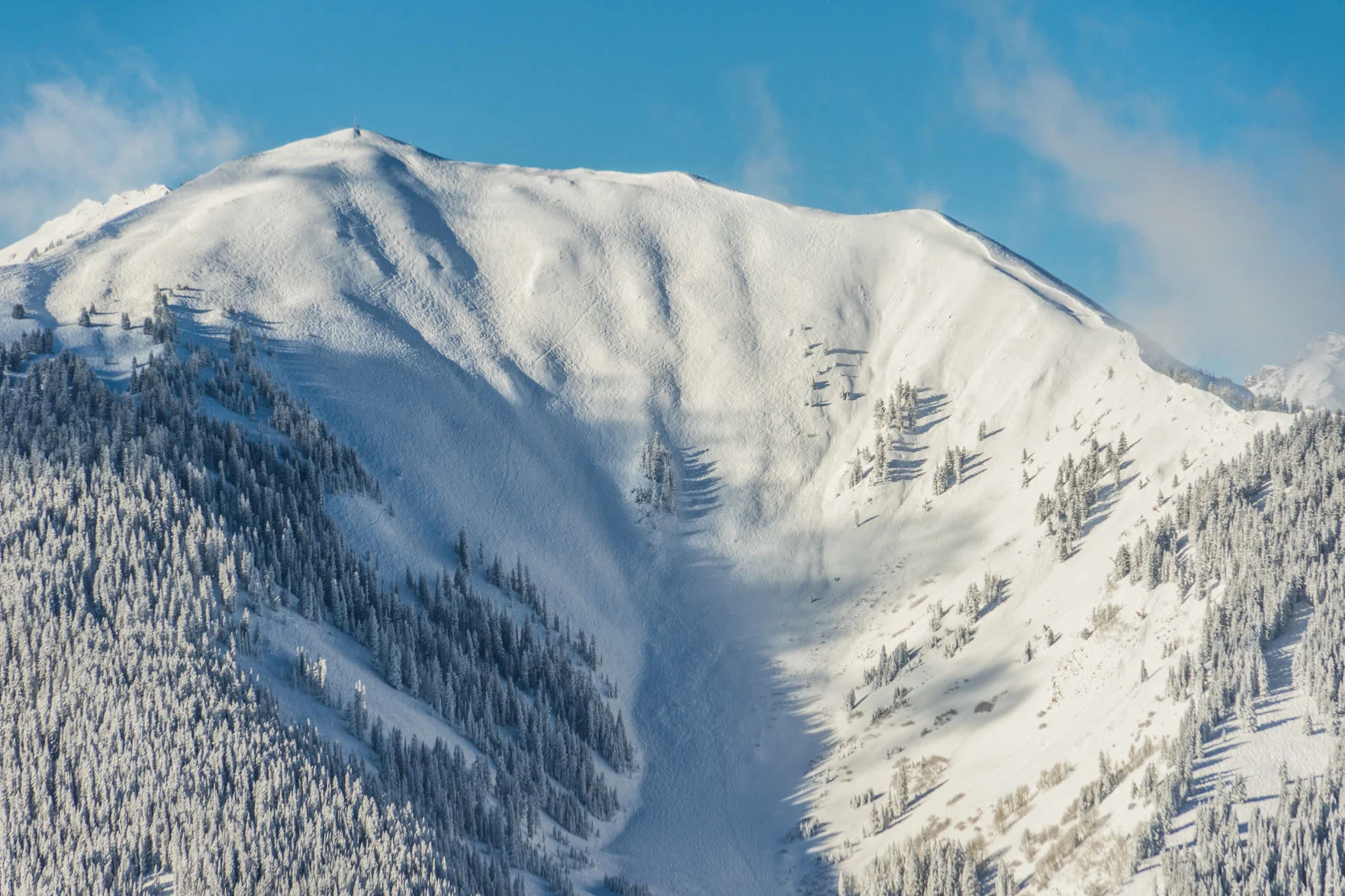
For our next resort on the list, we move to one of the four mega mountains of the Aspen region: Aspen Highlands. While Aspen might be known for its vibrant après scene and as a playground for the rich and famous, the mountain also attracts thrill seekers looking for some of the steepest runs and deepest powder in Colorado. Taking a trip up Deep Temerity puts skiers and riders in some of the best glades in the West, along with extreme chutes that need constant avalanche control throughout the season. Temerity’s most notable feature may be its access to the incredible Highland Bowl, among the best high-altitude bowl skiing locations in the country. This fixed-grip triple chair whisks guests up a length of 3,244 feet and a massive 1,709 feet of vertical gain. Aspen comes out with an impressive gradient of 27.8°, locking it into fourth place.
3. Headwaters – Big Sky Resort, Montana

Third on our list, we head back to the beautiful state of Montana. Montana translates to “mountain” in Spanish, and after claiming two spots on our list, it’s easy to see why. Headwaters blasts 1,230 feet in a lightning-fast 695 vertical feet, giving guests access to some of Montana’s most legendary couloirs and famous triple black diamond terrain. A traditional two-seater fixed grip for now, Big Sky plans to replace it within its 150-million-dollar improvement strategy in the coming years. Big Sky and Montana finish strong with a 29.5° gradient.
2. Double Diamond – Stevens Pass, Washington
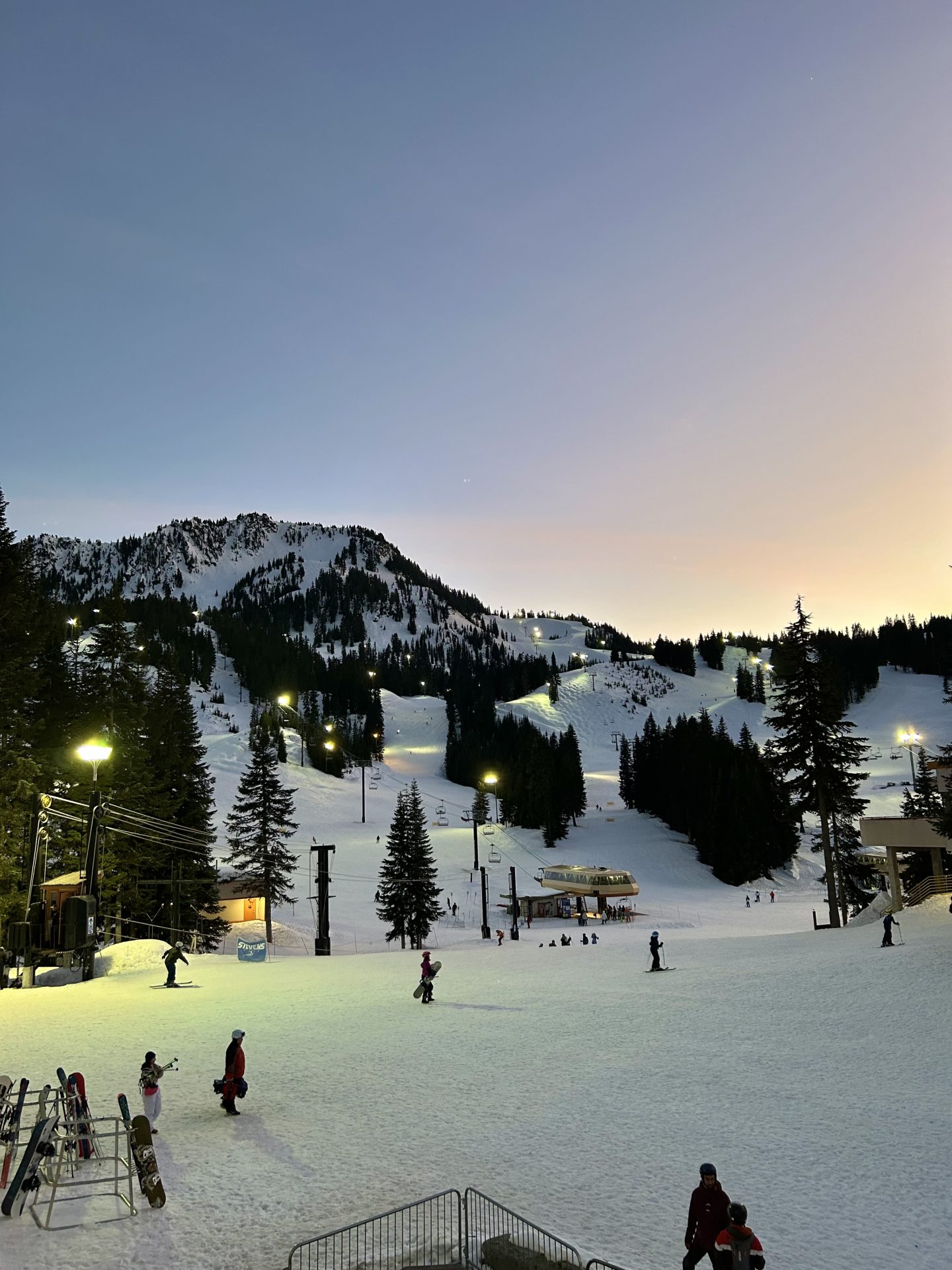
For our top two, our list takes us to the mighty Pacific Northwest. Nestled high in the Cascade Volcanic Range of Central Washington sits Stevens Pass, a small resort with no on-site lodging and nearly an hour from the nearest town. However, what Stevens Pass lacks in lodging, it more than makes up for in extreme vertical terrain. Double Diamond is a 1987 CTEC triple fixed-grip lift that takes you straight to the summit of Big Chief Mountain, and the launching ground for one of the gnarliest runs in all of North America; simply named Double Diamond. The lift takes you up 1,112 feet in a speedy 688 feet of vertical gain, providing a gradient of 31.7°. Some might point out that this lift unloads and continues downward, swooping guests up on the opposite side of the ridge as the Southern Cross lift. If counted as one lift, Double Diamond likely wouldn’t make the list. As it loads in two completely separate areas miles apart, and offers a single onloading/offloading location from the base of Double Diamond to the summit, it receives a pass in this list. Skiers and riders are treated to a near-vertical wall when they exit on the Double Diamond, but those who are willing to risk it can be treated to the Cascades’ freshest and likely most untouched inbounds powder.
1. 7th Heaven – Stevens Pass, Washington
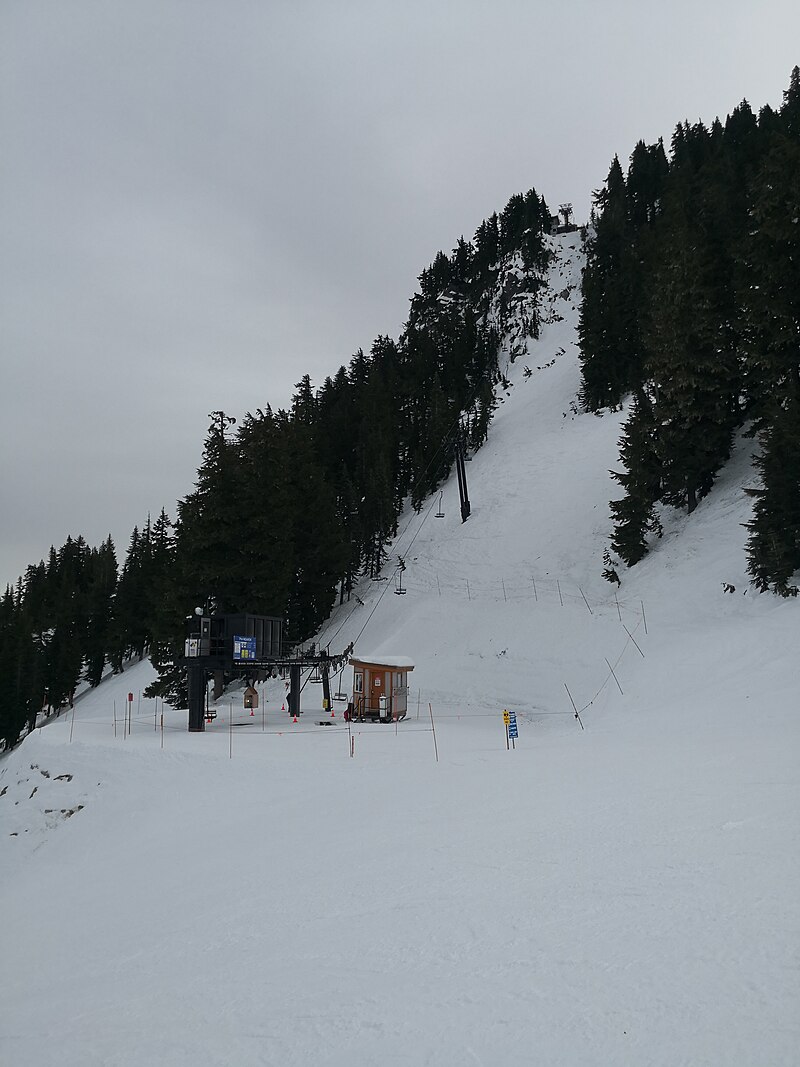
It truly speaks volumes to this unassuming Washington resort that BOTH of the steepest chairlifts in the U.S. are within its boundaries. 7th Heaven isn’t for the faint of heart. This two-seater fixed-grip Riblet goes nearly straight up the face of Cowboy Mountain, dropping skiers and riders off steeply into double black diamond terrain, variable conditions, and access to Stevens Pass’s best-kept secrets. Lift lines are usually nonexistent due to the intimidating nature of both the chair and the terrain it accesses, even as one of the closest resorts to the Seattle metro area. Stevens Pass is known for frequent storm systems that can pile on feet of snow overnight, so for those who are willing to take the ride up the steepest chairlift in the U.S., the rewards are well worth it. 7th Heaven rises 437 feet over a heart-stopping 657 feet, giving it a massive gradient of 33.6°.
Whether or not a chairlift is the steepest might not make it the best for every person on the mountain, but these extremely unique examples are bucket list worthy for those chasing the adrenaline only dangling hundreds of feet in the air can provide. While the ride up will surely be something to remember on all of these unique lifts, the views alone are reward enough. Their one-of-a-kind runs back down are just the sweet cherry on top, keeping us coming back for more.
oops – when the page refreshed after my last comment it’s fine. Sorry to bother you. Thanks for great content over the years!
Jasha
Hi guys! Love your articles! The font you’re using on this main page is super hard to read on my 24 inch monitor. A darker font would make it easier. Thanks!
Jasha